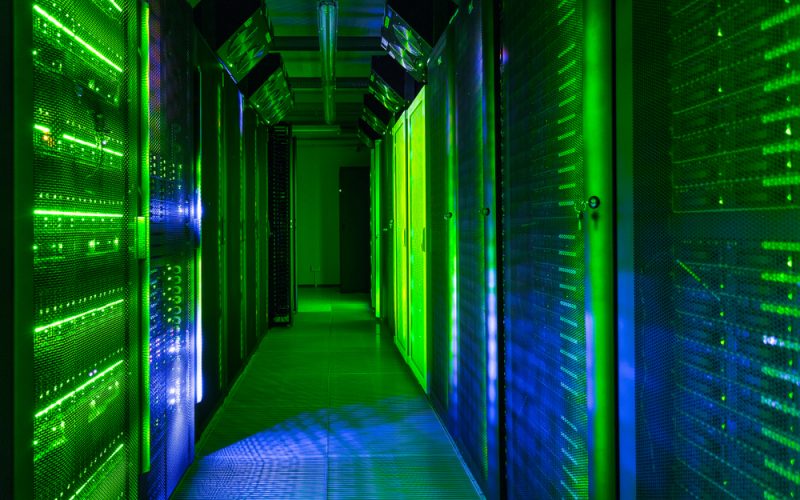In our increasingly interconnected world, safeguarding data has become an imperative task. Whether it’s sensitive customer information or closely guarded business strategies, data stands as a priceless asset that demands unwavering protection. Colocation data centers, emerging as the nerve centers of modern businesses, play a pivotal role in safeguarding this invaluable treasure trove. The key to creating an impenetrable fortress for data lies in adopting a dual approach, incorporating robust physical and digital security layers.
The Fortification of Physical Security
- Access Controls: Colocation data centers in India implement a multifaceted approach to access controls. This comprehensive strategy includes state-of-the-art biometric authentication methods such as fingerprint scans and retina recognition, alongside traditional key card systems and PIN-based entries. This ensures that only authorized personnel gain entry, guaranteeing that those with legitimate reasons are the only ones who can access the premises.
- Perimeter Security: A robust perimeter defense is established through a combination of fencing, barriers, and vigilant surveillance cameras that encircle the colocation data center in India. Security personnel conduct regular patrols, maintaining a constant watch against external threats, ensuring that data remains secure at all times, and giving businesses the peace of mind they need
- Mantraps and Biometric Verification: Access points are fortified with mantraps – enclosed spaces featuring two sets of interlocking doors. This ingenious setup ensures that only one individual can enter or exit at a time, effectively preventing tailgating. Furthermore, biometric verification methods like fingerprint scanning and retina recognition add an additional layer of identity validation, further reducing the risk of unauthorized access.
- Security Monitoring: Within data centers in India, you’ll find advanced surveillance systems that are truly exceptional. These systems are replete with a comprehensive array of security measures, including state-of-the-art motion sensors, an extensive network of closed-circuit television (CCTV) cameras strategically positioned to cover every angle, and cutting-edge infrared technology. This amalgamation of cutting-edge surveillance technologies ensures an unbroken and meticulous watch over the entire premises. Moreover, these monitoring systems go beyond passive observation; they offer real-time insights and alerts, empowering security personnel to promptly and effectively address any security concerns that may arise, thereby ensuring the protection of critical information.
The Bastion of Digital Security
- Firewalls and Intrusion Detection/Prevention Systems: Acting as vigilant gatekeepers, firewalls filter incoming and outgoing network traffic, effectively blocking any unauthorised access attempts. Intrusion Detection and Prevention Systems (IDS/IPS) actively monitor network traffic for signs of suspicious activity, taking automated actions to thwart potential threats.
- Network Segmentation: Implementing intelligent network segmentation proves to be a formidable barrier, significantly reducing the attack surface of data center networks in India. By isolating infrastructure components, this practice hinders attackers’ lateral movement and minimizes the potential impact of a breach.
- Security Patching and Updates: Regular updates and patches to operating systems and software are paramount. These measures close vulnerabilities that could be exploited by malicious hackers, ensuring the ongoing security of the digital environment.
The Synergy Between Physical and Digital Layers
The true strength of colocation data center security lies in the seamless integration between the physical and digital layers. These two facets of security are not isolated silos; they interact and reinforce each other, ultimately creating an impenetrable fortress. A data center’s biometric authentication system, for example, not only grants physical access but also seamlessly integrates with the digital security system. This synergy ensures that only personnel with valid biometric credentials can access and log in to the digital systems.
In the unfortunate event of a security breach, physical security measures can seamlessly complement digital efforts. For instance, a triggered motion sensor could initiate a lockdown of the affected area while the digital security system simultaneously quarantines the compromised data. In this collaborative response, physical security personnel can work in tandem with their digital counterparts to swiftly isolate affected servers or systems. This containment strategy prevents the further spread of the breach, allowing for targeted remediation efforts.
Given the critical importance of data security, companies operating in India must prioritise hyperscale data centers that boast robust security measures. These centers offer an unparalleled shield against the diverse array of risks that businesses face.
In Conclusion
The security of a colocation data center in India is fortified by the harmonious interplay between physical and digital security layers. These layers function cohesively to ensure the protection of data and the uninterrupted operation of critical systems. In an age where data is the lifeblood of businesses, such comprehensive security measures are not just a luxury but an absolute necessity. Data centers serve as the guardians of this invaluable asset, standing as the formidable fortresses that keep it safe from harm. As technology continues to advance and threats evolve, the collaboration between these physical and digital security layers will remain paramount in the ongoing battle to protect data and safeguard the interests of businesses and their customers alike.

